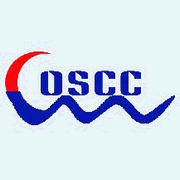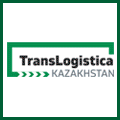DACHSER has announced the establishment of a joint venture in Malaysia at the beginning of May, in a bid to continue expanding its service portfolio in the Asia-Pacific region.
The services provided by Dachser Malaysia Sdn. Bhd. range from air and sea freight business to customs clearance and other logistics services.
It said in a statement that through its new joint venture partner, Malaysian entrepreneur Tan Ah Seng (holdings in Multitrans, Megalift), it is also able to offer special transports. It is planned in the short-term to employ a staff of 15 for the joint venture. The head office, and at the same time first branch office, are located in Petaling Jaya, near the capital Kuala Lumpur. There are also plans to open a second branch office.
"In Malaysia we are now present in another Tiger State following Singapore and Thailand, enabling us to develop both international and inner-Asian freight services for the benefit of our customers," said Thomas Reuter, managing director Dachser Air & Sea Logistics.
"Thanks to years of experience and sound knowledge of the local markets, our joint venture partner provides access to established local contacts and in-depth knowledge from the word go."
Huned Gandhi, a former member of the Dachser India management team, has been appointed as the CEO of Dachser Malaysia. He reports to Detlev Janik, chief regional director South/South East Asia, who is based in Singapore.
Source Shipping Gazette - Daily Shipping News
IMPORT cargo volume at US major retail container ports will be flat in May compared with the same month last year, but is expected to see solid year over year hikes through this summer and the back-to-school season, according to the monthly Global Port Tracker report produced for the National Retail Federation (NRF) by the consulting firm Hackett Associates.
"Consumers are spending despite gas prices and other economic concerns, so retailers are stocking up to meet the demand," NRF vice president for supply chain and customs policy Jonathan Gold said. "These numbers show imports growing through the back-to-school season and even into beginning of the shipping cycle for the holiday season. That's a sign that retailers are expecting a good year."
US ports followed by Global Port Tracker handled 1.18 million TEU in March, the latest month for which numbers are available. That was up 14.1 per cent from February, traditionally the slowest month of the year, and 8.5 per cent from March 2011.
April was estimated at 1.24 million TEU, up two per cent from a year ago, and May is forecast at 1.28 million TEU, the same as last year. June is forecast at 1.3 million TEU, up four per cent; July at 1.35 million TEU, up 1.8 per cent; August at 1.42 million TEU, up 7.2 per cent, and September at 1.45 million TEU, up 8.7 per cent.
The first half of 2012 is expected to total 7.3 million TEU, up 1.9 per cent from the same period last year. The total for 2011 was 14.8 million TEU, up 0.4 per cent from 2010Õs 14.75 million TEU. NRF projects 2012 retail sales will grow 3.4 per cent to US$2.53 trillion.
"The economy is on the mend and all the leading economic indicators continue to point the way toward positive growth," Hackett Associates founder Ben Hackett said. "2011 was a year of uncertainty that resulted in virtually no growth in import volume but we are witnessing a resurgence of confidence and demand."
Source Shipping Gazette - Daily Shipping News
GLOBAL shipping and logistics company, Wallenius Wilhelmsen Logistics (WWL) has made its inaugural call recently at Adelaide, Australia, with the arrival of m/v Aida on its route from Europe via North America.
The company said the ro-ro ship Aida, a pure car truck carrier (PCTC) with a capacity of 6,700 cars and built to the highest class of Lloyd's Register of Shipping.
The announcement comes on the heels of the recent addition of Galveston on the US east coast to the route, said the company statement. WWL carries cars to the Oceania but the trade is increasingly driven by Australia's mining and agricultural industries and the need for heavy equipment in the country.
"We have for some time seen increased demand in the market place for Adelaide, both from North America as well as Europe, mainly driven by large mining projects. We have had several inducement calls over the years and to support this continued customer demand we now establish a fixed port call," said Rob Lord, head of region Oceania.
Australia has an impressive number of mining projects being planned, with numerous projects approved each month. In 2010, Australia attracted 12 per cent of global mining exploration budgets.
The enhanced ocean service reflects WWL's ongoing desire to meet customer needs. It's part of a long history for the company: WWL ships first called at the port of Sydney in 1895, and have been sailing there ever since. In addition to Adelaide, the company has regular calls to Brisbane, Port Kembla, Melbourne and Fremantle in Australia as well as to Auckland in New Zealand.
Source Shipping Gazette - Daily Shipping News
US-listed containerships charter owner, Danaos Corporation, recently took delivery of one more newly built containership, the 13,100-TEU Hyundai Smart, expanding its operational fleet to a total of 62 containerships with a total capacity of 336,849 TEU.
The Hyundai Smart, built at Hyundai Samho Heavy Industries Co Ltd, is 366 metres long, 48.2 metres wide and has a speed of 24.70 knots. The vessel has commenced its 12-year time charter at a fixed charter rate immediately upon delivery and according to the company, the annualised EBITDA run-rate contribution of the vessel is expected to be approximately US$18.8 million, according to Marketwire.
The company also announced that it sold the 28-year-old 2,130-TEU containership "Montreal" in April to an unrelated third party for a net price of $6.6 million.
Danaos is one of the largest US listed containership companies based on fleet size. Furthermore, the company has a contracted fleet of two additional containerships aggregating 26,200 TEU with scheduled deliveries up to June 2012.
Source Shipping Gazette - Daily Shipping News
Riga. According to a recently published study commissioned by IATA, the International Air Transport Association, the aviation industry plays a key role in Latvia‘s trade and economy. According to the study, undertaken by Oxford Economics, aviation accounts for 2.0 percent of Latvia‘s GDP, and the industry supports jobs for 2.0 percent of workforce in the country.
”A productive and efficient aviation industry plays a pivotal role in driving development of today’s global economy through critical connections for both passengers and air freight. Latvia has a medium high measure of connectivity by air relative to its economic size. It could therefore increase its economic growth and Foreign Direct Investment by improving its air connectivity with positive economic measures towards aviation” said Rafael Schvartzman, IATA Vice President Europe.
Due to the geographical location of Latvia, air transport is of considerable importance to Latvian export companies in terms of enabling connections and also in offering air cargo transport. Aviation is also a key enabler of tourism to Latvia, and approximately 30 per cent of foreign visitors arrive to the country by air. Aviation industry supports jobs for 2.0 percent of the workforce in the country, or 18 600 jobs.
In year 2011, the total number of air passengers arriving or departing from Latvia was 5.1 million, some 10% up compared to a year earlier.
Source IATA
AUSTRALIA's Qantas Group today announced it will increase capacity on domestic Qantas, Jetstar and QantasLink routes during 2012/13 to strengthen its network in the business and leisure markets.
The airline said a range of changes, including aircraft upgrades and additional frequencies, will be made to provide greater choice and convenience for customers. Qantas will add extra services during peak times on core east coast business routes between Sydney, Melbourne and Brisbane.
The reintroduction of Boeing 747 services on the Sydney-Perth route and more Airbus A330 services on the Melbourne-Perth route will increase capacity in the east-west market and give more customers access to the award-winning Skybed product in business class.
Jetstar will increase capacity in its key leisure markets. QantasLink will increase capacity across Queensland with the introduction of F100 jet services between Brisbane and Emerald, complementing Q400 services and providing cascaded growth in key regional markets.
Source Shipping Gazette - Daily Shipping News
LONDON Gatwick is looking to position itself as an alternative gateway for emerging markets "just as effectively" as Heathrow by taking advantage of a capacity crunch and lack of take-off and landing slots, said its chief commercial officer Guy Stephenson.
By gaining Air China as its latest long-haul carrier of four weekly direct flights to Beijing, it is strengthening "Britain's connectivity into the rapidly growing economies of the world," said Mr Stephenson, cited a report from London's Daily Telegraph.
It believes it can capture the long-haul market and become a hub much as Heathrow does in handling up to 33 per cent of its passengers as transfers with the approval of a second runway, currently 10 per cent of its passengers are transfers.
The West Sussex-based airport is running at 75 per cent of its capacity and could up its 2011-2012 figures of 34 million passengers to 40 million by 2020 with the approval of a second runway.
The UK government is under pressure to reconsider airport expansion after opposing a third runway at Heathrow due to worries of the UK losing out on trade with emerging markets. Gatwick, known as a point-to-point airport, has relied heavily on short-haul with a lesser amount of transfers but it is suggested that a second runway may be approved there or at Stansted.
Source Shipping Gazette - Daily Shipping News
PROVIDER of specialised air charter solutions, Chapman Freeborn Airchartering has been named Cargo Charter Broker of the Year 2012 by leading industry title Air Cargo News, the company announced.
The global aircraft charter specialist received the new accolade at the prestigious Cargo Airline of the Year 2012 awards, held recently at London's Lancaster Hotel, by chief operating officer, Shahe Ouzounian.
The latest industry recognition adds to company's list of honours - including being voted Air Cargo Charter Broker of the Year at the separate World Air Cargo Awards for the last five consecutive years.
Chapman Freeborn is now nearing its 40th year and continues to lead the way in the international charter broker industry. It broke new ground last year when it opened a new office in Melbourne - making it the first international air charter broker to establish its own presence in Australia, and helping clients to unlock the potential of the surrounding Australasian markets.
In the last 12 months, the company also opened office in Moscow, Russia, and Shanghai, China, bringing to a total of 35 offices spanning six continents. Chapman Freeborn prides itself on being creative and innovative - and the focus has always been on building long-standing relationships with freight forwarder clients and airline suppliers.
Source Shipping Gazette - Daily Shipping News
2012-05-10
Leading U.S. offshore marine support vessel operator SEACOR Marine LLC (SEACOR Marine), located in Houma, Louisiana, has chosen Kongsberg Maritime to supply sophisticated Dynamic Positioning systems for two new 190-foot CrewZer Class Crew boats (also known as Fast supply vessels). SEACOR Lynx and SEACOR Leopard are under construction at Gulfcraft Shipyard, located in Franklin, Louisiana, and are scheduled for delivery in the first half of 2013. The SEACOR Lynx and SEACOR Leopard will be the first Crew boats to operate using an ABS Class DP3 system, affording them the highest degree of manoeuvring safety available today.
As a pioneer in DP Crew boat design, SEACOR Marine is keen to ensure that its latest generation of CrewZer Class vessels meet the highest possible safety standards. ABS Class DP3 allows for significant DP operational safety including full protection of the system in case of fire and flooding. Kongsberg Maritime Inc., located in Houston, Texas, will install the pinnacle in DP system technology aboard the new vessels, in the form of a triple redundant KONGSBERG K-Pos DP3 system integrated with proprietary position reference and environmental sensor systems.
“Dynamic Positioning offers significant station keeping improvements compared to manual control,” explains Joe McCall, Project Manager, SEACOR Marine. “In order for a DP system to be effective, it has to be completely reliable in even the most extreme weather conditions, so we are enthusiastic about the installation of KONGSBERG DP3 aboard our new CrewZer class vessels. The system is designed to offer the highest redundancy and reliability which allows for safer transfers of cargo and personnel.”
“SEACOR Marine is at the forefront of DP Crew boat design and operation having built the world’s first ever DP Crew boat, the first DP1 and DP2 Crew boats, the world’s largest DP Crew boats and now the first DP3 Crew boat,” adds Ted Murphy Senior Sales Manager, Kongsberg Maritime Inc. “We have supplied KONGSBERG DP systems for all of these industry first vessels so are delighted to continue our close working relationship with SEACOR Marine on the next generation of the ground-breaking CrewZer Class vessels.”
The CrewZer Class features a twin-hull design that enables speeds of 46-knots, which is more than twice that of conventional Crew boats. CrewZer Crew boats feature safety focused design, based on utilising the most advanced technology available, such as an innovative “FROG” personnel transfer system and the latest DP3 system from Kongsberg Maritime. The DP3 rating of SEACOR Lynx and SEACOR Leopard combined with a wide, stable work deck, increases conventional operating windows even further than the previous generation CrewZer Class vessels, allowing the vessel to hold station in weather conditions where other vessels simply could not work.
“The KONGSBERG DP system for Crew boats is superior to any other system on the market today and the reliability and global support of the equipment in service is well proven,” concludes McCall.
Source Kongsberg Maritime
During her maiden voyage the HANJIN SOOHO, the Korean shipping company HANJIN’s largest containership to date, berthed in the Port of Hamburg on 4 May 2012. With a slot capacity of 13,100 TEU (20-ft standard containers), this mega-containership was handled at Eurogate Container Terminal Hamburg (CTH).
The HANJIN SOOHO is 366 metres long, 48.20 metres wide, and has over 800 connections for reefer containers. It was named in honour of the late Sooho Cho, former Chairman of Hanjin Shipping Group, who died in 2006. The HANJIN SOOHO is also the first of nine 13,100-TEU newbuilds to be deployed by HANJIN jointly with its partners on the East Asia-Europe service NE6 organized by the CKYH Alliance.
Along with Werner Viessman of the Nautical Operations Centre, Jong-Man Hong, Managing Director Europe, Patrick Won, Country Manager Germany, and further representatives of HANJIN SHIPPING and Thomas Eckelmann, Emanuel Schiffer and Peter Zielinski of the EUROGATE Executive Board, to mark the occasion Captain Dosun Han of the HANJIN SOOHO was presented with the Admiralty Coat of Arms of the Port of Hamburg.
The HANJIN SOOHO will be deployed on the NE6 Europe-East Asia container line operated by HANJIN jointly with COSCO, K-Line and YANG MING. With this NE6 service, the four shipping companies call at the ports of Hamburg, Rotterdam, Le Havre, Algeciras, Singapore, Hong Kong, Xingang, Kwangyang, Busan, Shanghai, Yantian, Singapore, Algeciras and Hamburg in a rotation lasting 77 days.
In 2011 a total of 5.2 million TEU were handled in the Port of Hamburg’s container traffic with Asia. “The forthcoming deepening of the navigational channel of the Lower and Outer Elbe will further boost Hamburg’s attractiveness as the European hub port for mega-ships such as the HANJIN SOOHO,” said Patrick Won.
Source PORT OF HAMBURG
2012-05-09
First airline to fly direct between Europe and inland Chinese megacity
Today Finnair begins flying direct to Chongqing, one of the largest and fastest-growing cities in China. The new route is a logical next step in the carrier’s strategy of offering the shortest connections between Asia and Europe via Helsinki. Finnair is the first carrier to open a direct flight route between Europe and Chongqing.
Situated on the edge of the Tibetan plateau, greater Chongqing is one of China’s four province-level municipalities, and the only one located in inland China. With a total population of 32 million residing in an area about the size of Austria, Chongqing’s urban population is expected to double over the next five years.
“China is a key part of our Asia-Europe strategy,” says Finnair's CEO Mika Vehviläinen. “Western China is an important growth area, and the new route will strengthen our position in the growing Asian markets. I want to thank the Chongqing authorities and the local airport for the excellent cooperation and support for opening this new route. We believe Chongqing has the potential of developing into a hub for travel between Western China and Europe, both for business and leisure travellers.”
Chinese companies and many Western companies, especially in the electronics, automotive and chemical industries, are currently expanding their operations in Chongqing, and business travel and cargo prospects are promising. Chongqing Airport also has already opened 140 routes to more than 80 cities in China and Asia, and the airport is undergoing expansion. When the expansion is complete in 2015, the airport will be capable of receiving 45 million passengers per year.
Besides booming business activity, Chongqing offers much to see for tourists interested in China’s history and nature. Visitors can enjoy historical buildings, temples, hot springs and natural beauty, as well as the Dazu Rock Carvings, a UNESCO World Heritage Site. Chongqing also provides convenient access to river cruises on the Jialing and Yangtze rivers, and the city is well connected to Lhasa, Xian and Kunming.
Finnair is flying Airbus A330 and A340 aircraft on the route, which takes eight and a half hours. In addition to four flights per week to Chongqing, in China Finnair flies daily to Beijing, Shanghai and Hong Kong from Helsinki, the most geographically logical transfer point for connecting with more than 50 destinations in Europe. This summer Finnair will operate 81 flights per week to 11 destinations in Asia.
Source Finnair Plc
JAPANESE second largest carrier NYK has announced it will partner Regional Container Lines (RCL) to launch a joint Thailand-Vietnam-Canton (TVC) service from May 13 to replace the current joint Thailand-Vietnam-Singapore (TVS) service with Vinalines Container.
NYK will deploy one 1,000-TEU ship and RCL two similar size vessels on this loop. The first sailing is scheduled on May 13 by vessel Chana Bhum V.010N calling at Bangkok.
Ports of call for the 21-day rotation include Bangkok, Laem Chabang, Haiphong, Shenzhen-Shekou, Hong Kong, Haiphong, and back to Hong Kong, Shenzhen-Shekou and Bangkok.
NYK said in a statement this new joint service will strengthen its service network from south China to Vietnam and Thailand by shortening the transit time from Thailand to north Vietnam to four days, the fastest in the market.
Source Shipping Gazette - Daily Shipping News
DUBAI's Emirates Shipping has announced it will impose a general rate increase (GRI) of US$250 per TEU on cargo from the Far East and south east Asia to east Africa from May 15.
For cargo from the Far East and south east Asia to Indian sub-continent the GRI will be US$300 per TEU.
For cargo from the Far East and south east Asia to the Middle East, the GRI will be US$300 per TEU.
Source Shipping Gazette - Daily Shipping News
SHANDONG province's Port of Weifang posted a 23 per cent year on year cargo volume increase to 4.46 million tonnes which made 20.3 per cent of the port's target for 2012.
The central port area lifted 4.13 million tonnes, up 17.8 per cent while the western port area's throughput surged 201 per cent to 333,900 tonnes.
In March, Weifang's throughput grew 33 per cent year on year to 1.89 million tonnes. Central port area lifted 1.71 million tonnes, while western port area lifted 177.400 tonnes, both setting new monthly highs.
Source Shipping Gazette - Daily Shipping News
NINGBO customs posted a year-on-year increase of 4.7 increase in the foreign trade cargo value to US$45.21 billion in the first quarter of this year, Xinhua reports.
Export value grew six per cent to $26.66 billion. Import value increased 2.8 per cent to $18.55 billion. Private companies' imports and exports accounted for 66.4 per cent of the total, valued at $17.69 billion.
Ningbo Mitsubishi Chemical, a major Sino-Japanese joint venture in Ningbo with an annual production capacity of 600,000 tonnes, imported 55,000 tonnes of raw materials during the first quarter. In the same period, Samsung Heavy Industry Ningbo Company, subsidiary of Korea-based Samsung Heavy Industry, recorded an import and export volume of 130,000 tonnes.
Source Shipping Gazette - Daily Shipping News
The magazine SEA has been published since 1935
International business magazine JŪRA MOPE SEA has been published since 1999
The first magazine in Eurasia in the four languages: English, Chinese, Russian and Lithuanian
|
|




.jpg)






